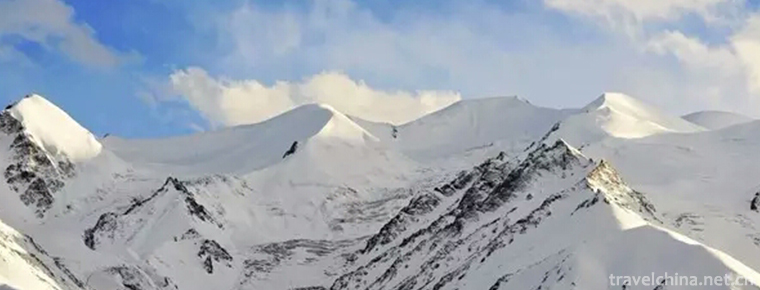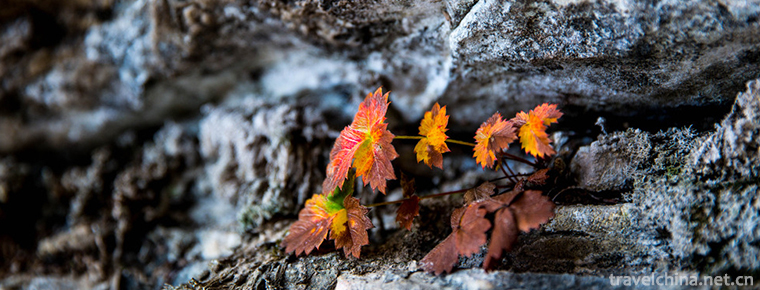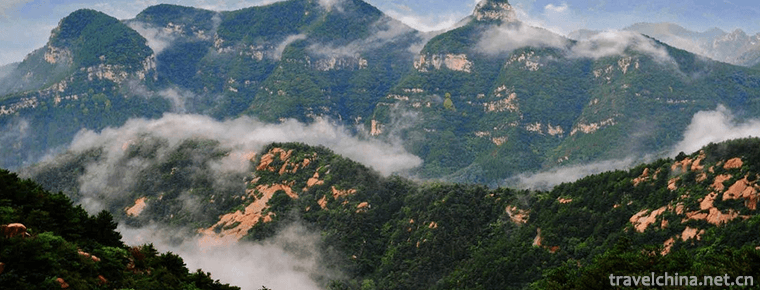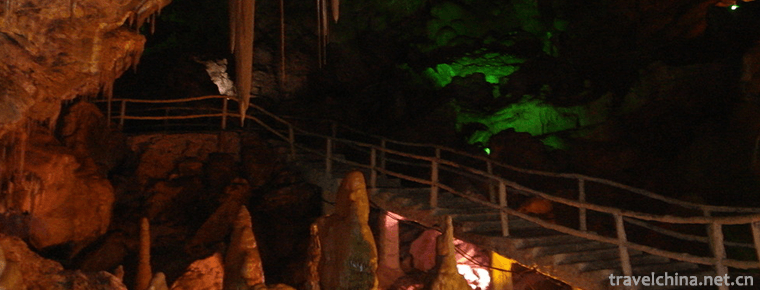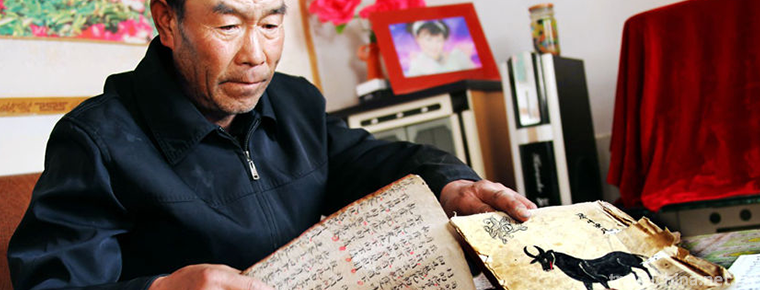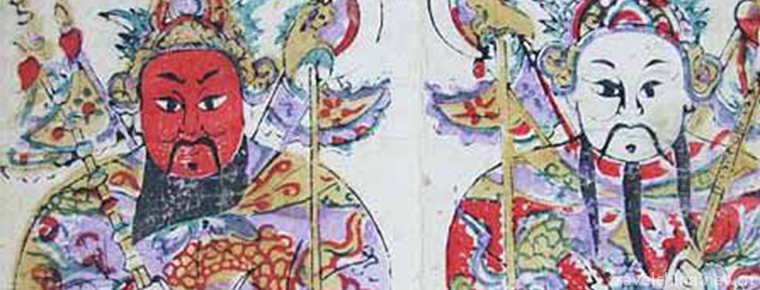Dayugou Scenic Area
Dayugou Scenic Area
Dayugou Scenic Area is located in Dayugou, Muer Township, Zhuoni County, Gannan Tibetan Autonomous Prefecture. It is 12 kilometers away from the county seat and has a total area of 105214.6 hectares. Dayugou, a tributary of Taohe River, runs 70 kilometers from north to south across the whole territory. It is the northern slope of the Dieshan Mountains, with flowing water rhyming and green Hills dripping green. Dayu Valley has nine branches, in turn, Yunjiang Gorge, Qibu Gorge, Sangbu Gorge, Ajiao Xiaogou, Ajiao Dagou, Oatmeal Valley, Zha Ya Tagou, Bashi Valley, Nietzsche Valley, etc. They are distributed in the southeast of Dayu Valley, like a giant fan left over from the world, with heavy ink on its face, depicting numerous strange mountains and waters. The main peak of Mount Dieshan in the scenic area, Zaikega, is 4920 meters above sea level (the highest peak of Qinling Mountains), with an elevation of 2500 meters above sea level and a relative elevation difference of 2400 meters. Therefore, the vertical distribution of organisms in the scenic area varies greatly. There is the saying that "a mountain has four seasons, ten miles and different days", which is colorful and contrastive.
The scenic area includes two townships of Radiated Muer and Nalang, including Xini Valley, Nalang Valley, Boyu Valley and Muer Valley, and the rich Juenai Tibetan folk culture on the South Bank of Taohe River.
The scenic spot is as famous as Jiuzhaigou and has the reputation of "Jiuzhaigou in the South and Dayugou in the north".
Overview of scenic spots
Dayugou Scenic Area is located in Dayugou, Muer Township, Zhuoni County, Gannan Tibetan Autonomous Prefecture. It is 30 kilometers away from the county seat and has a total area of 105214.6 hectares. Dayugou, a tributary of Taohe River, runs through the whole territory from north to south, among which the Dieshan Mountains extend with flowing water and green hills. Dayu Valley has nine branches, in turn, Yunjiang Gorge, Qibu Gorge, Sangbu Gorge, Ajiao Xiaogou, Ajiao Dagou, Oatmeal Valley, Zha Ya Tagou, Bashi Valley, Nietzsche Valley, etc. They are distributed in the southeast of Dayu Valley, like a giant fan left over from the world, with heavy ink on its face, depicting numerous strange mountains and waters. The main peak of Mount Dieshan in the scenic area, Zaikega, is 4920 meters above sea level, and the gully mouth is 2500 meters above sea level, with a relative height difference of 2400 meters. Therefore, the vertical distribution of organisms in the scenic area varies greatly. It is said that "one mountain has four seasons and ten miles have different days". The snow line of Mount Dieshan is above bare rock, followed by alpine meadow, virgin forest, low mountain meadow, shrub, farm and pasture, etc., with colorful and distinct contrast. Dayugou is divided into five sections according to the composition of mountain-shaped River system. From West to east, it is divided into five scenic spots: Qibugou, Bashili Gou, Niganima Gou, Ajiao Xiaogou and Sangbugou. There are more than 200 main scenic spots.
climate
The annual average temperature is 4.6 degrees Celsius, the hottest July average temperature is 14.8 degrees, and the coldest month average temperature is 7.6 degrees below zero. It is a typical "summer without heat, winter without severe cold" climate which conforms to the concept of tourism and leisure. The four seasons are distinct, the scenery is graceful, and the natural ecological landscape is gorgeous and colorful.
Introduction of scenic spots
Triangular stone
Triangle Stone Scenic Spot is located at the mouth of Triangle Stone Valley of Bugou Branch Valley in Dayugou Qibugou. As soon as it entered the ditch, a huge stone stood out in front of us. The three peaks with distinct edges and corners were triangular and standing on the top of the stone. They were magical and magnificent. It was said that the triangle stone was the arrow that King Gesar shot at the Guamelo tribe. Placed under the triangle stone, the surrounding pines are lush and the flowing springs are rippling. Looking up at Qishi is like a cock singing at its neck, so it is also called "cock dawn". When people walk around the stone in amazement and look back at the cock's dawn, it becomes another scene. A "sister peak" stands on the top of the green hills, with pines and cypresses on the top, and the stone colors are gorgeous. It makes people deeply feel the wonder of nature. The same landscape is appreciated in different places and has different postures.
Yun Jiang Gorge
Yunjiang Gorge is the first scenic spot in Dayugou scenic spot. The stone walls on both sides of the Gorge stand side by side. The Dayu River passes through the Gorge, twisting and twisting, and the sound of the water is rippling. In the middle of the gorge, the pines and cypresses are shaded by the sun. Outside the gorge, the pines and cypresses are lush and crisscrossed, making the gorge like the epitome of the Wuxia Gorge of the Yangtze River.
Flag cloth Temple
Qibu Temple, also known as Nadao Temple, is situated at the Qibugou Estuary of Muer Town on the South Bank of Taohe River. Qibu Temple was originally built on the platform of "Siyao" in Qibugou oat ditch. It is 1.5 kilometers away from the site. The ruins are obvious. There are still soil wall remnants and carbon layer in the site. Later, it moved to the site at the end of Ming Dynasty because of its change of religion. It has a history of about 800 years. As for the establishment of Qibu Temple, there is such a record in the History of Anduo's Religion and Administration: From 1618 to 1702, the temple was founded by Saikang Bassan, a prominent monk in Pengyu, Tibet, with the support of Yang Chaoliang, the ninth generation of Zonigabo (Tusi). Saikangbasan Jiejiatuo presided over the teaching of Qibu Temple and Zhuonida Temple in the fifteenth year of Kangxi reign (1676) of the Qing Dynasty and served concurrently as Fatai. In 1706, Awangsonan became the platform of Qibu Temple, forming the platform inheritance system of Qibu Temple. In the seventh year of Yongzheng in the Qing Dynasty (1729), Awangsonan presided over the construction of the Qibu Temple Sutra Hall. Then in the thirty-sixth year of Qianlong Emperor (1771), he built the Seniza Cang of the Qibu Temple, which was originally dedicated to the white ivory sculpture of the Immeasurable Life Buddha, the personally carved statue of King Baitanmufa in Gendun of the Second Dalai Lama, the statue of Nengyan Maitreya offered by King Qujichu, and Sakyamuni of the Dazhao Temple. The Golden Stiffness Mother and the Eight Pagodas of Goodness and Death decorated by the offerings in front of the Buddha statue belong to the Johnny Monastery, which appoints the Fatai to preside over the teaching of the Monastery. In 1958, Qibu Temple was caught in a fire, and none of the buildings survived except the Great Sutra Hall. The Qibu Temple is famous for its three-year, seven-day Manai. From the first day of May to the seventh day of the lunar calendar, villagers near Mu Er Town come to worship gods and mountain gods, and accept the roof of the Infinite Life Buddha. There are 22 monks and one living Buddha in the temple. The Xiangqu Manla living Buddha presided over the temple affairs. The Awangsonan Fatai was handed down to the sixth generation.
Chiblinka Resort
Qibrinka Resort is located on the shore of Zhuomalatso Lake. It mainly consists of Tibetan tents and cabins. It has three Tibetan cabins and tent cities with Zhuoni's unique folk style. It is a large-scale tourism resort with complete hydroelectric facilities, including leisure, entertainment and accommodation.
Goddess pool
Shunqi Buxia descended about 500 meters to the goddess pool. Legend has it that this pool was the place where fairies bathed. One year, fairies floated down, but the water of the goddess pool was knee-deep. The grass and trees on both sides of the pool were dry and discolored. Faced with such a situation, they had to return to the palace sadly. Soon, it was rainy, and the mountains and rivers were shining again. From then on, when the drought on the grassland was serious, local Tibetan women gathered near the pool, burning incense and simmering mulberries, singing folk songs, praying for fairies to spread clouds and rain, so as to keep the water plants flourishing and the cattle and sheep strong.
A Jiao gou
It is adjacent to Sangbu ditch and divided into Ajiao ditch and Ajiao ditch. "Eighteen crossings" is extremely dangerous, forming the Ajiaogou Grand Canyon. The most peculiar scenery should be three stone gates, one dangerous, one strange. The River rushes out of the canyon and converges into the Taohe River and the Yellow River.
Sangbugou and Sangbu Grassland
Entering Sangbu Valley, we can see the vast grassland and rolling hills. The rich grassland has become a natural pasture for cattle, sheep and livestock to breed and grow. Ajiao ditch is adjacent to Sangbu ditch, which is divided into big Ajiao ditch and small Ajiao ditch. "Eighteen crossings" is extremely dangerous, forming the Ajiaogou Grand Canyon. The most peculiar scenery should be three stone gates, one dangerous, one strange. The River rushes out of the canyon and converges into the Taohe River and the Yellow River.





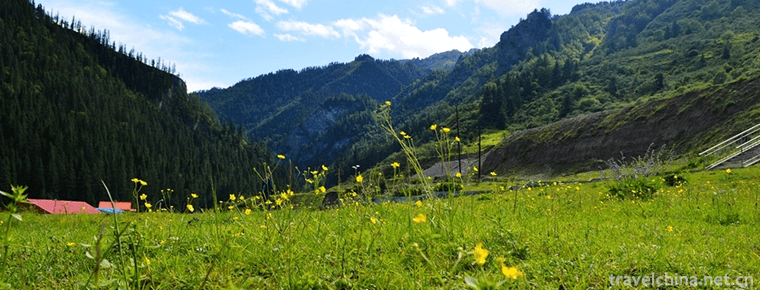
-
Aerge Mountains
Mount Alge, A'erge Mountains, a mountain range at the junction of Xinjiang Uygur Autonomous Region, Tibet Autonomous Region and Qinghai Province, China..
Views: 252 Time 2018-11-01 -
Baishishan Scenic Area Baoding City Hebei Province
Baishishan Scenic Area, also known as Baishishan National Geological Park, is called "Xiaohuangshan" because its scenery resembles the Huangshan Mountain in Anhui Province..
Views: 253 Time 2018-11-24 -
Yimeng Mountain Range
Yimeng Mountain Tourist Area is a cross-regional tourism area consisting of the geographical coordinates of Mengshan and Yishan Mountains according to the local tourism department of Shandong Province.
Views: 118 Time 2018-12-08 -
Wanxiang Karst Cave
Vientiane Cave, the national AAAA-level tourist attractions, provincial geological parks, provincial scenic spots and provincial cultural relics protection units.
Views: 124 Time 2018-12-17 -
Tian Xiang Yuan
Tianxiang Garden is located in Nanchang City, Jiangxi Province, Qingshan Hunan Avenue, formerly known as the West Lake Garden. Founded in 1976, with an area of 112 mu.
Views: 200 Time 2019-02-22 -
Bru
Bru, Mongolian means throwing. Competitions are divided into two categories: long throw and accurate throw, mostly held in festive festivals. The long throw is to decide .
Views: 457 Time 2019-04-04 -
Hexi treasure roll
Hexi Baojuan, a traditional folk literature in Liangzhou District of Wuwei City and Suzhou District of Jiuquan City, Gansu Province, is one of the national intangible cultural heritages..
Views: 120 Time 2019-05-03 -
Liang Ping Wood New Year Print
Liangping Wood Printing New Year Painting belongs to Liangping's "Three Wonders" (Bamboo Curtain, New Year Painting and Lantern Opera), which is a kind of painting art drawn by the people in.
Views: 171 Time 2019-05-13 -
The technical skill of penjing
Bonsai art refers to the Soviet bonsai art, which originated in the Tang Dynasty, flourished in the Ming Dynasty, matured in the Qing Dynasty, and developed in modern times. Since the 1980s, Suzhou Bo.
Views: 236 Time 2019-06-09 -
Beijing Second College of Foreign Languages
Beijing Second Foreign Language College is a famous university with advantages of foreign language and literature and tourism management, and coordinated development of literature, management, economi.
Views: 311 Time 2019-09-06 -
Beijing Wuzi University
Beijing Wuzi University is a public institution of higher learning which is characterized by logistics and circulation, based on economic disciplines, with management disciplines as its main branches,.
Views: 313 Time 2019-09-06 -
Miyaro scenic spot
Miyaro, translated as "fun Bazi", is a provincial scenic spot, located in the Zagunao River Valley of the upper reaches of Minjiang River in Lixian County, Aba Tibetan and Qiang Autonomous Prefecture.
Views: 106 Time 2020-11-07
